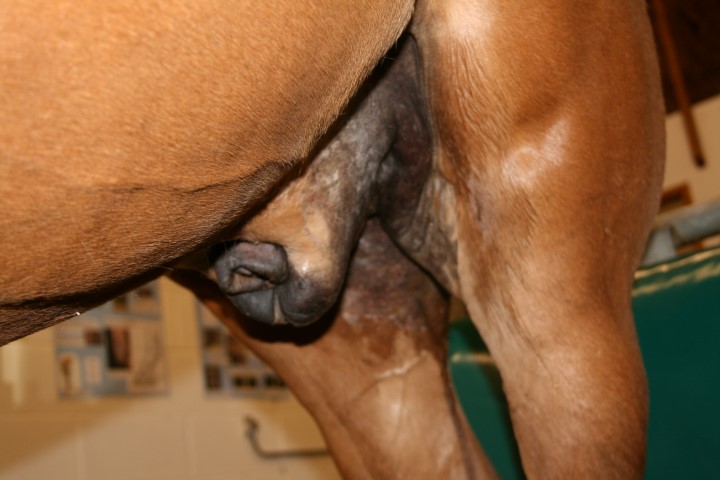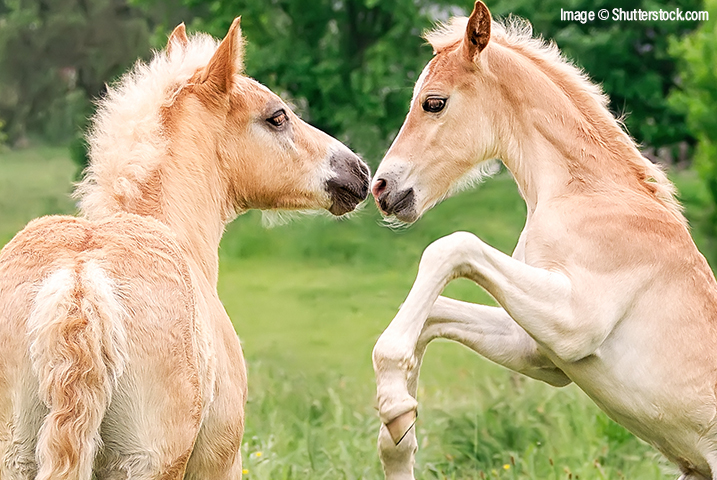- Your colt has had both testicles removed and the two large scrotal skin wounds have been left open for drainage.
- Please do not clean these wounds nor apply anything to them. If necessary, after a few days the lower legs may be washed with a sponge + clean water, NOT a hose.
- Some bleeding post-op is normal. This should however, only be a slow drip. It may continue (but much slower) for a few days. A stream of blood is NOT normal and you should contact your veterinary surgeon immediately; in theory, a recently castrated colt could bleed to death if haemorrhage from the testicular artery were profuse.
- The scrotal wounds connect directly with the abdominal cavity. Often a blood clot will protrude from the wound; anything else is abnormal and you must contact your veterinary surgeon immediately.
- Some swelling is normal in the first few days after surgery. This should only be the size of an orange or grapefruit. If larger than this please contact the practice and speak to a veterinary surgeon.
- To minimise the swelling it is important not to leave the animal stabled.
- Turnout into a small clean paddock on his own is ideal (not in the fly season.) Do not turn out with other colts or mares, as they are likely to run around and initiate serious bleeding. Alternatively, the animal must be walked in hand for a minimum of fifteen minutes three to four times a day.
- Even though the testicles have been removed, live sperm remain in the vas deferens (tubes to the penis) and so there is a risk that a recently castrated colt could successfully cover a mare. The exact time period that sperm remain viable is difficult to estimate. Some research suggests only 2 days, but it would seem sensible to wait a few weeks until the wounds have healed fully before the castrate is turned out with mares.
If you have any other queries please contact the practice.

Abnormal swelling following castration – please call your veterinary surgeon
last updated May 2019
